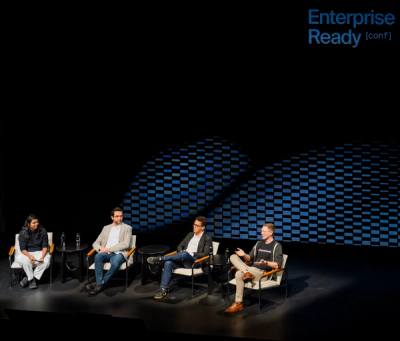
Security News
OWASP 2025 Top 10 Adds Software Supply Chain Failures, Ranked Top Community Concern
OWASP’s 2025 Top 10 introduces Software Supply Chain Failures as a new category, reflecting rising concern over dependency and build system risks.
@electric-sql/pglite
Advanced tools
PGlite is a WASM Postgres build packaged into a TypeScript client library that enables you to run Postgres in the browser, Node.js and Bun, with no need to install any other dependencies. It is only 3.7mb gzipped.
PGlite - the WASM build of Postgres from ElectricSQL.
Build reactive, realtime, local-first apps directly on Postgres.

PGlite is a WASM Postgres build packaged into a TypeScript client library that enables you to run Postgres in the browser, Node.js, Bun and Deno, with no need to install any other dependencies. It is only 3mb gzipped and has support for many Postgres extensions, including pgvector.
import { PGlite } from '@electric-sql/pglite'
const db = new PGlite()
await db.query("select 'Hello world' as message;")
// -> { rows: [ { message: "Hello world" } ] }
It can be used as an ephemeral in-memory database, or with persistence either to the file system (Node/Bun/Deno) or indexedDB (Browser).
Unlike previous "Postgres in the browser" projects, PGlite does not use a Linux virtual machine - it is simply Postgres in WASM.
For full documentation and user guides see pglite.dev.
It can be installed and imported using your usual package manager:
import { PGlite } from '@electric-sql/pglite'
or using a CDN such as JSDeliver:
import { PGlite } from 'https://cdn.jsdelivr.net/npm/@electric-sql/pglite/dist/index.js'
Then for an in-memory Postgres:
const db = new PGlite()
await db.query("select 'Hello world' as message;")
// -> { rows: [ { message: "Hello world" } ] }
or to persist the database to indexedDB:
const db = new PGlite('idb://my-pgdata')
Install into your project:
NodeJS
npm install @electric-sql/pglite
Bun
bun install @electric-sql/pglite
Deno
deno add npm:@electric-sql/pglite
To use the in-memory Postgres:
import { PGlite } from '@electric-sql/pglite'
const db = new PGlite()
await db.query("select 'Hello world' as message;")
// -> { rows: [ { message: "Hello world" } ] }
or to persist to the filesystem:
const db = new PGlite('./path/to/pgdata')
PostgreSQL typically operates using a process forking model; whenever a client initiates a connection, a new process is forked to manage that connection. However, programs compiled with Emscripten - a C to WebAssembly (WASM) compiler - cannot fork new processes, and operates strictly in a single-process mode. As a result, PostgreSQL cannot be directly compiled to WASM for conventional operation.
Fortunately, PostgreSQL includes a "single user mode" primarily intended for command-line usage during bootstrapping and recovery procedures. Building upon this capability, PGlite introduces a input/output pathway that facilitates interaction with PostgreSQL when it is compiled to WASM within a JavaScript environment.
The build process of PGlite is split into two parts:
Docker is required to build the WASM module, along with Node (v20 or above) and pnpm for package management and building the TypeScript packages.
To start checkout the repository and install dependencies:
git clone https://github.com/electric-sql/pglite
cd pglite
pnpm install
To build everything, we have the convenient pnpm build:all command in the root of the repository. This command will:
/packages/pglite/release.To only build the Postgres WASM module (i.e. point 1 above), run
pnpm wasm:build
If you don't want to build the WASM module and assorted WASM binaries from scratch, you can download them from a comment under the most recently merged PR, labeled as interim build files, and place them under packages/pglite/release.
To build all TypeScript packages (i.e. point 2 of the above), run:
pnpm ts:build
This will build all packages in the correct order based on their dependency relationships. You can now develop any individual package using the build and test scripts, as well as the stylecheck and typecheck scripts to ensure style and type validity.
Or alternatively to build a single package, move into the package directory and run:
cd packages/pglite
pnpm build
When ready to open a PR, run the following command at the root of the repository:
pnpm changeset
And follow the instructions to create an appropriate changeset. Please ensure any contributions that touch code are accompanied by a changeset.
PGlite builds on the work of Stas Kelvich of Neon in this Postgres fork.
PGlite is dual-licensed under the terms of the Apache License 2.0 and the PostgreSQL License, you can choose which you prefer.
Changes to the Postgres source are licensed under the PostgreSQL License.
FAQs
PGlite is a WASM Postgres build packaged into a TypeScript client library that enables you to run Postgres in the browser, Node.js and Bun, with no need to install any other dependencies. It is only 3.7mb gzipped.
The npm package @electric-sql/pglite receives a total of 1,411,074 weekly downloads. As such, @electric-sql/pglite popularity was classified as popular.
We found that @electric-sql/pglite demonstrated a healthy version release cadence and project activity because the last version was released less than a year ago. It has 3 open source maintainers collaborating on the project.
Did you know?

Socket for GitHub automatically highlights issues in each pull request and monitors the health of all your open source dependencies. Discover the contents of your packages and block harmful activity before you install or update your dependencies.

Security News
OWASP’s 2025 Top 10 introduces Software Supply Chain Failures as a new category, reflecting rising concern over dependency and build system risks.

Research
/Security News
Socket researchers discovered nine malicious NuGet packages that use time-delayed payloads to crash applications and corrupt industrial control systems.

Security News
Socket CTO Ahmad Nassri discusses why supply chain attacks now target developer machines and what AI means for the future of enterprise security.